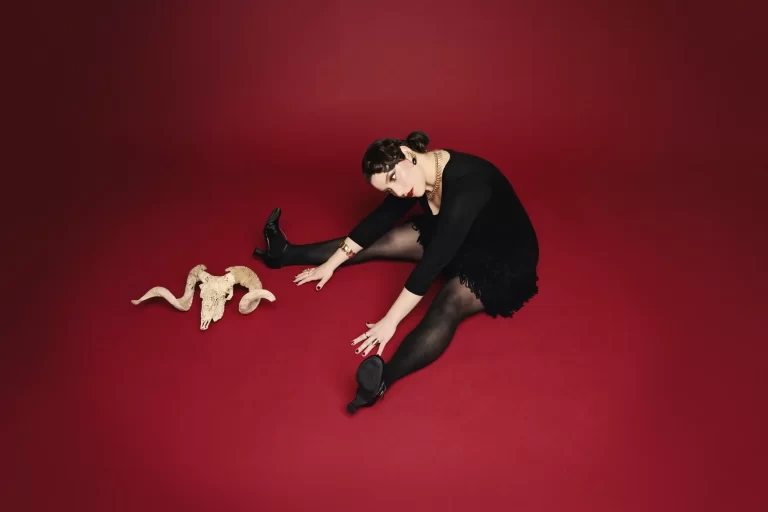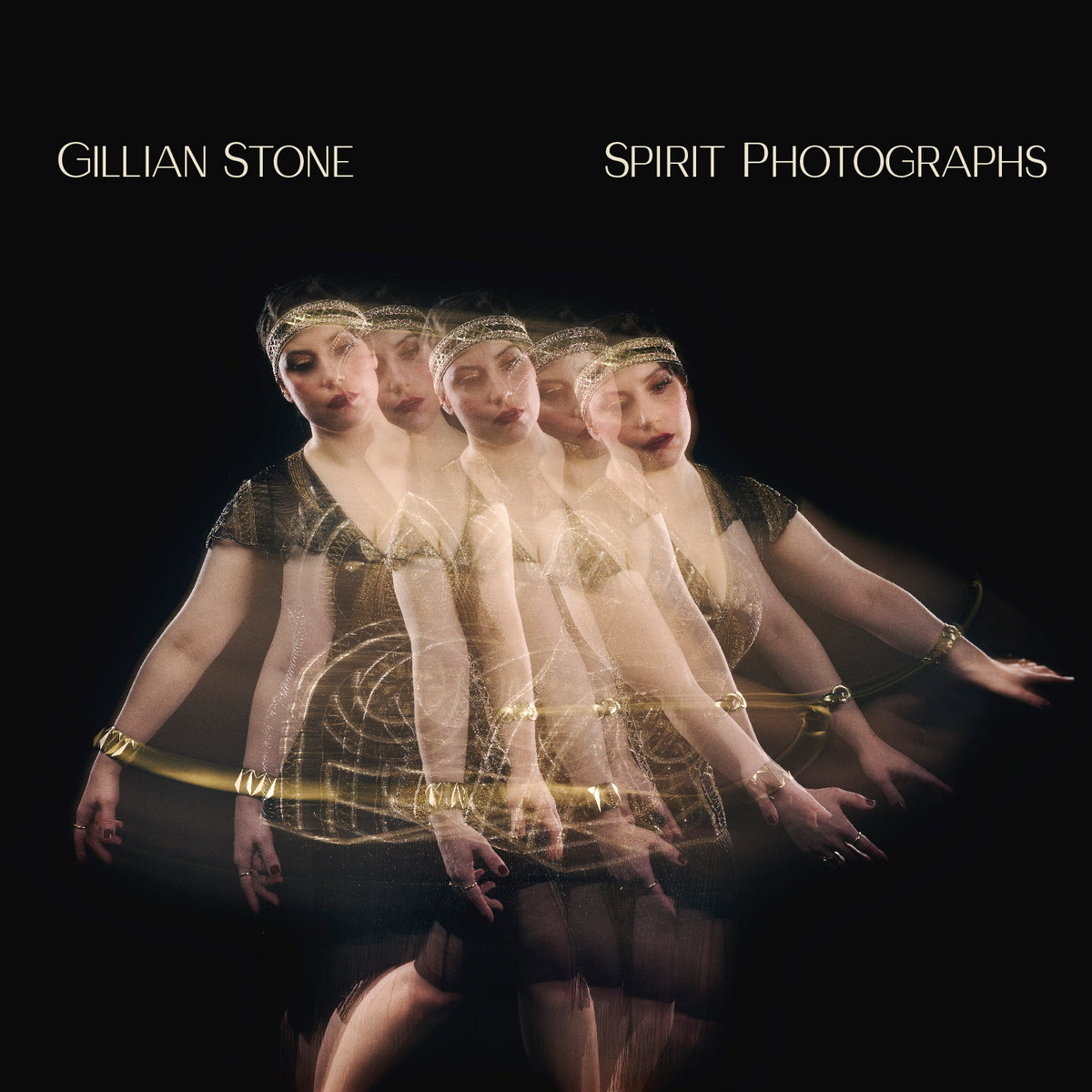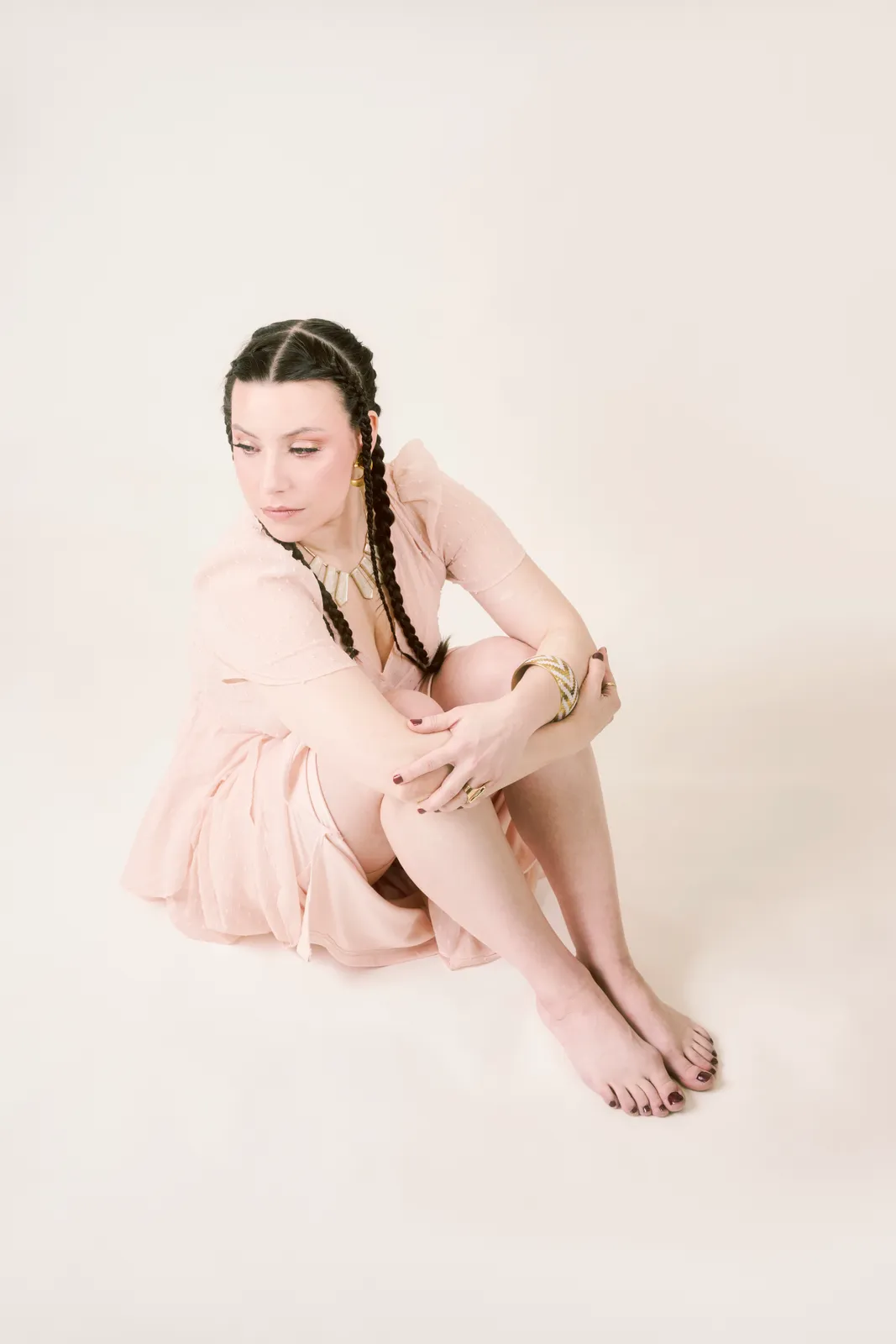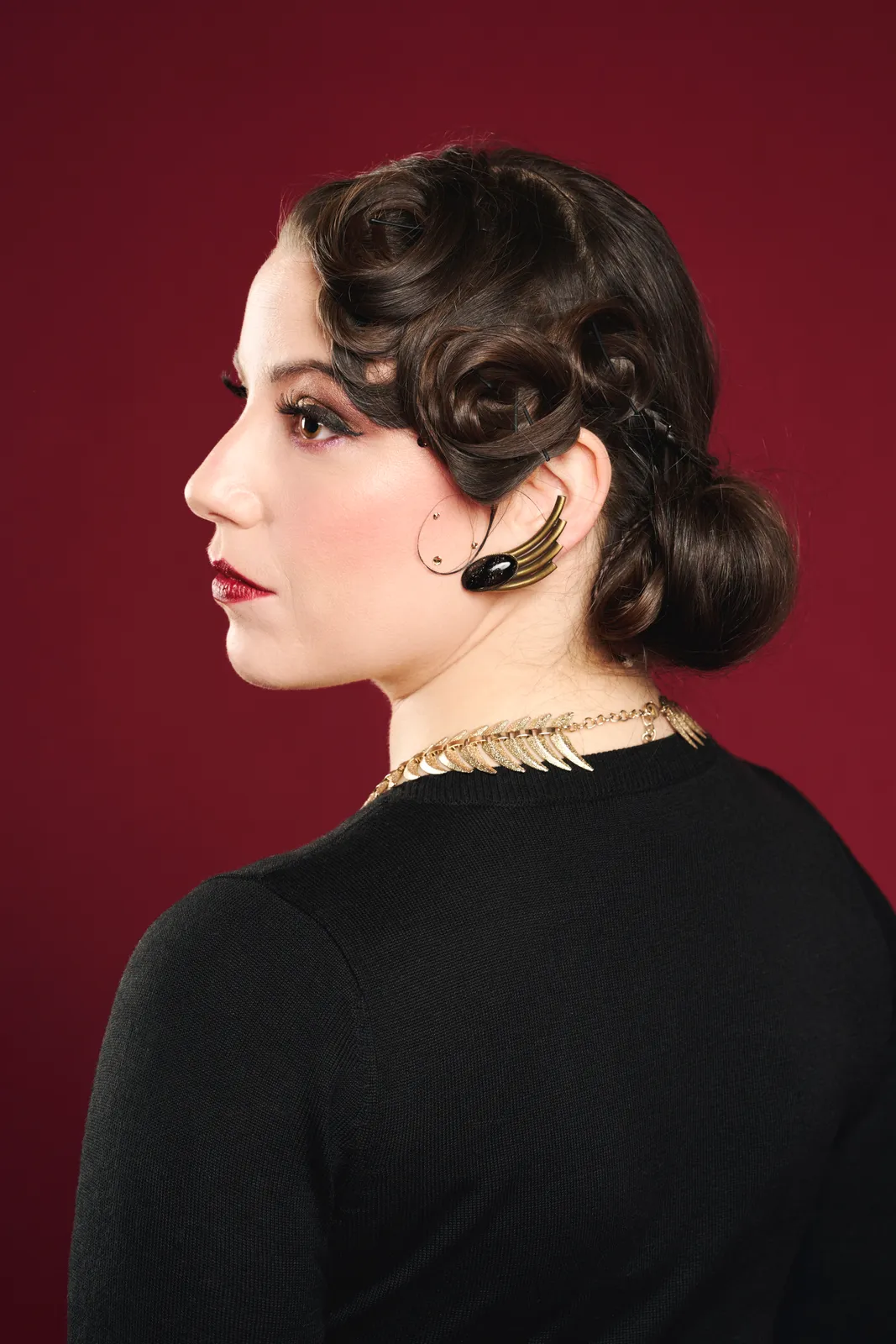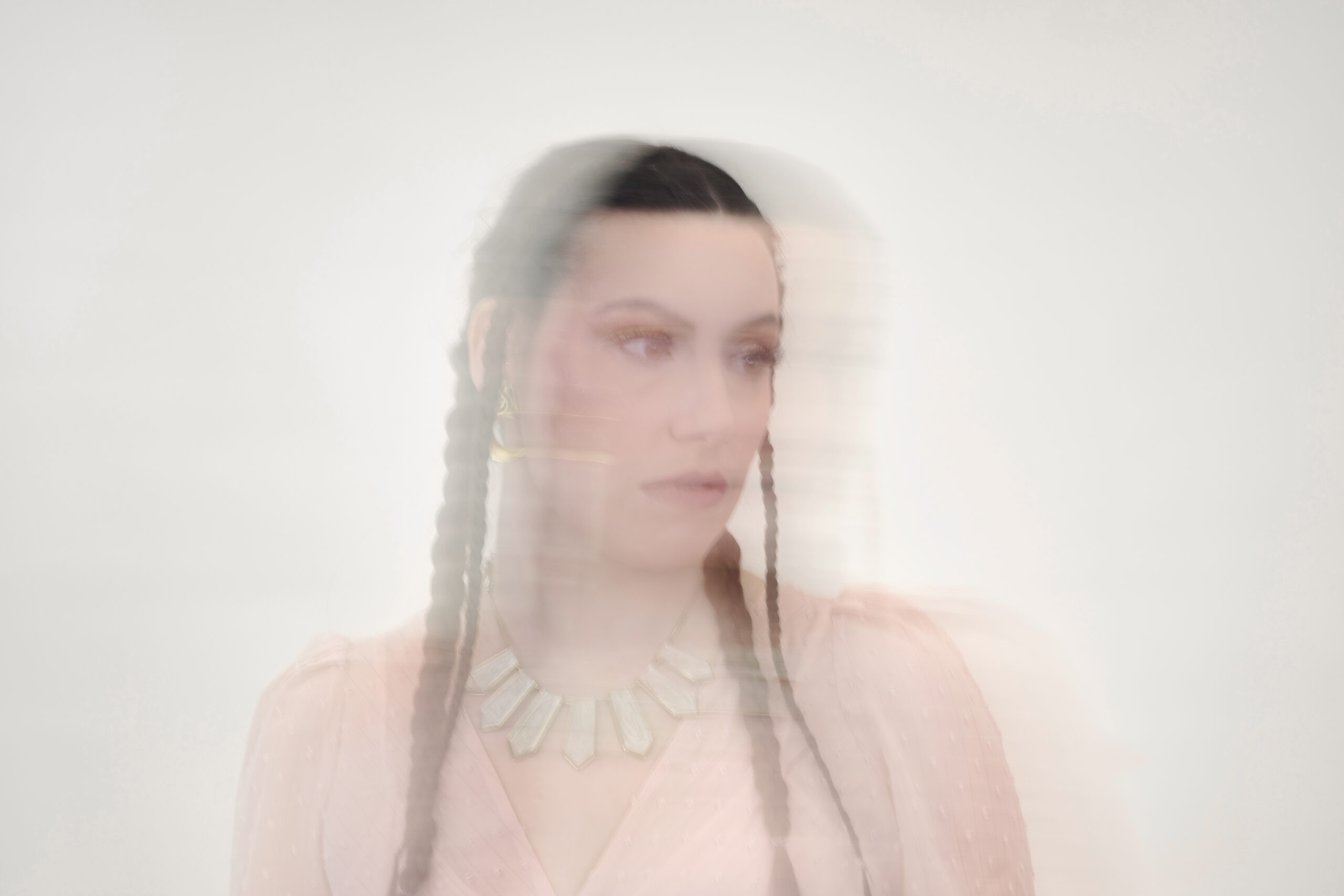“An exercise in naming ghosts in order to vanquish them.” So reads the liner notes of Spirit Photographs, the new EP from Toronto/Tkaronto-based multi-instrumentalist, ethnomusicologist and interdisciplinary artist Gillian Stone. A collection of drone folk songs which attempts to repurpose the past and its related grief into something energizing, and thus invert the experience of suffering. What if in accepting pain as a facet of existence, we might be able to transcend personal and collective trauma, and live life anew?
As we described in a preview, the release is structured around Elisabeth Kübler-Ross’s stages of grief—denial, anger, bargaining, depression and acceptance—each song taking us a step further through this experience. Thus opener ‘June’ with its slow warmth and lingering melancholy leads into the simmering ‘Amends’. A song where ethereal tones give way to physicality as Gillian Stone descends into rage.
I felt you under my breath,
growling, mewling in my chest.
A fountain of youth I whetted then left.
Regret is a wily muse, but I’ll name it out loud
Representing bargaining, ‘Raven’s Song’ rises from the aftermath of this angry crescendo. A track which “captures a mind seized by obsession through natural imagery,” as we wrote in our preview. “Stone carrying a torch through a nocturnal forest, a place of dark rivers and eyes in the night, hoping to go down to the water and snuff out the fierce burn in her hands.” The song eventually fades into silence before a cover of Black Sabbath’s ‘Solitude’ evokes the depressed stage of the journey, as though in searching the river Stone finds herself lost. “My name it means nothing / My fortune is less,” she sings. “My future is shrouded in dark wilderness.”
But across the track’s peaks and troughs, something flickers. The smallest flame to be protected and nurtured. Closer ‘The Throne’ might not be the final epiphany or longed-for recovery, but it marks a new relationship with everything that has gone before. An ability to look at the past clear-eyed, to speak it aloud. To accept it for what it was in the hope that it need not always be.
Gillian was kind enough to answer some questions about the record, so read on for in-depth thoughts on its structure, influences, and the therapeutic nature of making music.
Hi Gillian, thanks so much for speaking with us and congratulations on the new EP. How does it feel to be so close to letting Spirit Photographs into the world?
Thank you! Honestly, being this close to releasing Spirit Photographs feels a bit surreal. It’s taken up so much of my brain space over the last two years. I’m excited and apprehensive, along with feeling incredibly vulnerable. But I’m also very proud of it. It’s taken me years to finally release my work in a meaningful way.
Can we talk a little about the structure of the record? Why did you decide to map it around the Five Stages of Grief, and how did this inform the creation of the record?
The Five Stages of Grief model came to me after most of the songs had been written. Only “Amends” was written with that concept in mind. I had been researching post-WWI/Spanish Flu works of art, and, upon finding very little, came across some literature referring to the Spanish Flu as the “forgotten pandemic”. No one wanted to talk about it, to create in reference to it. I then discovered the phenomenon of spirit photography – essentially a double exposure hoax, but a method people were using to combat grief during that era. I thought about how much this represented the denial stage. I then realized I had been exiting a denial stage myself when I wrote “June”, and how much “The Throne” represented acceptance. And everything just fell into place after that.
Despite the difficult themes, the album emerges with a certain sense of triumph. As though there’s power in the way it confronts trauma head on. Was it a therapeutic record to make?
It was very therapeutic, and I absolutely wanted to imbue the record with a sense of triumph. For me, writing music is a form of therapy. I essentially create other worlds where I can explore big emotions in a safe and controlled way. Between trauma and mental health, I have had significant experiences with grief throughout my life. Using songwriting as a tool to let these feelings pass through me is triumphant – naming ghosts in order to vanquish them. At its core, Spirit Photographs is a record about love, whether it be self-love, romantic love, or familial love. Grief is about love. And love is a triumph.
Who/what do you consider the biggest influences on your work? Both in terms of sound and lyricism?
There are so many, but Joanna Newsom, PJ Harvey, and Nina Simone are huge for me. They are so singular, and fearless in creating whatever the fuck they want to create. “Don’t Smoke in Bed” from Nina Simone in Concert is one of the most perfect performances I have ever heard. I was also introduced to Low while I was recording Spirit Photographs, and Double Negative became a huge influence on the process. They have since become one of my favorite bands. Mimi Parker’s recent passing hit me hard – I don’t think I’ve ever been that upset about the passing of an idol.
We can’t talk about the release without mentioning the videos for the singles you directed along with Emma Buchanan and Amir Heidarian. Could you expand a little on the films and how the collaboration came about?
Working with Emma and Amir was very special. I first met Emma when she came to one of my shows with a mutual friend. I was at a barbeque with her a few days later, and she was like “what you’re doing is post-rock” and I felt so understood. It turned out she was in film school, and I was looking for someone to make my next two music videos with. We started to discuss concepts, and everything flowed so easily. Emma then brought in Amir, who has the most beautiful eye for composition and colour. Every meeting we had, every site visit and discussion about concept, was all so positive and respectful. For both videos I gave them I top-down concept and they ran with it; everyone’s ideas and views were taken into consideration. Those videos were a true collaborative effort.
Spirit Photographs is out now and available from the Gillian Stone Bandcamp page.
Photography by Joel Gale and assisted by Danielle Fried, album by John M. Hall and Gillian Stone

